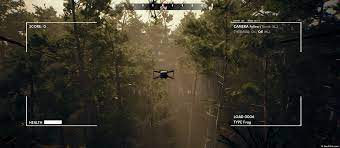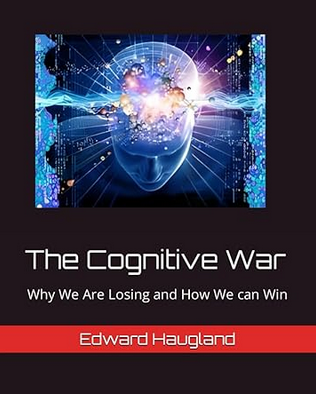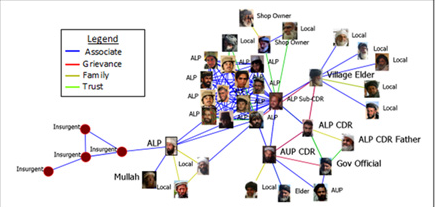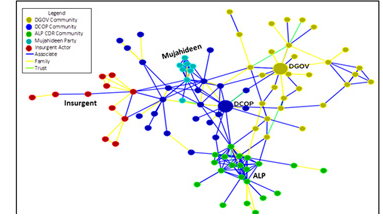
Back in the day, way back, there were groups of folks tagged as Cro-Magnon. These folks understood kinetic warfare – they knew that someone might not be coming home at the end of the day.

And though the Greeks had not arrived on scene, they understood that they needed to exercise zero trust if they were to survive another day.

Fast forward thousands of years, and kinetic warfare becomes a game on a laptop, where when you close the game, folks get up from the ground and go home for the evening.

And where once was there a family gathering, TikTok becomes the tie that binds. No matter the personal information collected by China, the same personal information that China leverages to cognitively connect with anyone willing to sign up.

Now on to an article about social media, special ops, and cognitive war. But First, I need to give credit to the author Edward Haugland and his book “The Cognitive War”. Well written and foot notes firming up the author’s conclusions and providing deeper insight for the reader.
The article that I will summarize is titled “Visualizing Social Networks to Inform Tactical Engagement Strategies that will Influence the Human Domain“. You can tell by the length of the title that there is a close association with the authors and the military. In this case, the Special Ops community.
Some assumptions:
- There is good and evil in the world.
- Cognitive war and kinetic war share a common goal – to shape an outcome.
- Cognitive war and kinetic war are different paths to accomplish a common goal — get folks to do what you want them to do.
- A success with applying cognitive war can often prevent the start of a kinetic war.
- Cognitive war is proactive and often kinetic war is reactive.
- Cognitive war requires thought, strategic planning and long term goals.
- History shows that kinetic war is often a knee jerk reaction with no long term goals — tactical with little thought to consequences and what defines a win.
- Lose the cognitive war and you lose the kinetic war.
- Eliminating the “Titanium Silo” from “Cognitive War”.
I am going to post a series of articles in which I will defend my assumptions.

Article Abstract
The human domain is one of the most critical and challenging aspects of modern conflicts and will remain a decisive factor in future conflicts. A recent white paper signed by key military leadership states, “Time and again, the U.S. has undertaken to engage in conflicts without fully considering the physical, cultural and social environments that comprise what some have called the human domain.”[i] In order to prevent, shape, and win future conflicts our forces must embrace the challenge of understanding and influencing the human domain. To address this challenge, a new partnership between the Special Operations Command, Marine Corps, and Army has recently chartered the Strategic Landpower Task Force to study the confluence of the land, cyber, and human domains.[ii] To support the Task Force’s research, this paper illustrates the benefits of collecting, structuring and visualizing socio-cultural data to better understand and influence the human domain.
Although the methods of social network and link analysis are not new to the military’s analytical community, the challenge of collecting the right data in the right structure makes these methods difficult to apply at the tactical level. To address this challenge, the Defense Analysis Department’s Common Operational Research Environment (CORE) laboratory at the Naval Postgraduate School developed Lighthouse to help the warfighter perform geospatial, temporal, and relational analysis of social networks.[iii] Lighthouse facilitates the structured collection of socio-cultural data using custom data entry forms configured for a variety of data entry platforms like mobile phones, tablets and standard computers. These platforms enable our forces to collect and push data into different software packages to analyze the human domain. To demonstrate the utility of Lighthouse while conducting Village Stability Operations (VSO), the first and second authors deployed to Kandahar, Afghanistan in early 2013 to train, advise, and assist units within the Special Operations Task Force – South (SOTF-S) to collect, manage, and visualize socio-cultural data. This paper provides examples of how social network and link analysis assisted units in their efforts to understand and influence the human domain at the tactical level.”
Visualizing the Human Domain
The paper discusses an application that was applied in Afghanistan. A goal of the application is to visually display the relationships of folks in a village in Afghanistan. Afghanistan could just as easily have been Small Town, USA.
The collection of two types of data were required.
- Family and business relationships.
- Attribute data – actor characteristics such as job title, address, position in community, etc.
Tools that can be used to visually display the relationships are ORA, Pajek, and Gephi.
A sociogram illustrating relationships within a village is shown below.

A sociogram illustrating relationships between villages is shown below:

The Real World
“Although the benefits of using social network and link analysis allow our units to better understand the complexities of the human dynamics, there is a cost. The time needed to manage and update the data can be enough of a burden for the unit to give up on the effort. With all of the other competing demands and reporting requirements imposed on the units they are forced to prioritize their time. Therefore, because time is a precious resource, our forces need a data collection and management mechanism that is very easy to use. There is a wealth of information that resides in the heads of the soldiers on the ground interacting with the locals on a daily basis. The majority of this information is contained within written descriptions reported in daily situation reports that may or may not get entered into databases. The information is generally not in a structure that can easily be imported into analytical software packages. The purpose of Lighthouse is to provide our soldiers with a mechanism to capture the information they learn while deployed using custom data entry forms, configured for a variety of data entry platforms like mobile phones, tablets and standard computers that allow data to be uploaded into multiple software packages to analyze the human domain.”
Conclusion
The implementation, deployment and collection of feedback was done about ten years ago. If the same problem is addressed today, the application requires automation in the capture of data and real time streaming. Considering the time line, the environment, and end goals, this was a sound investment.
Discover more from Threat Detection
Subscribe to get the latest posts sent to your email.
